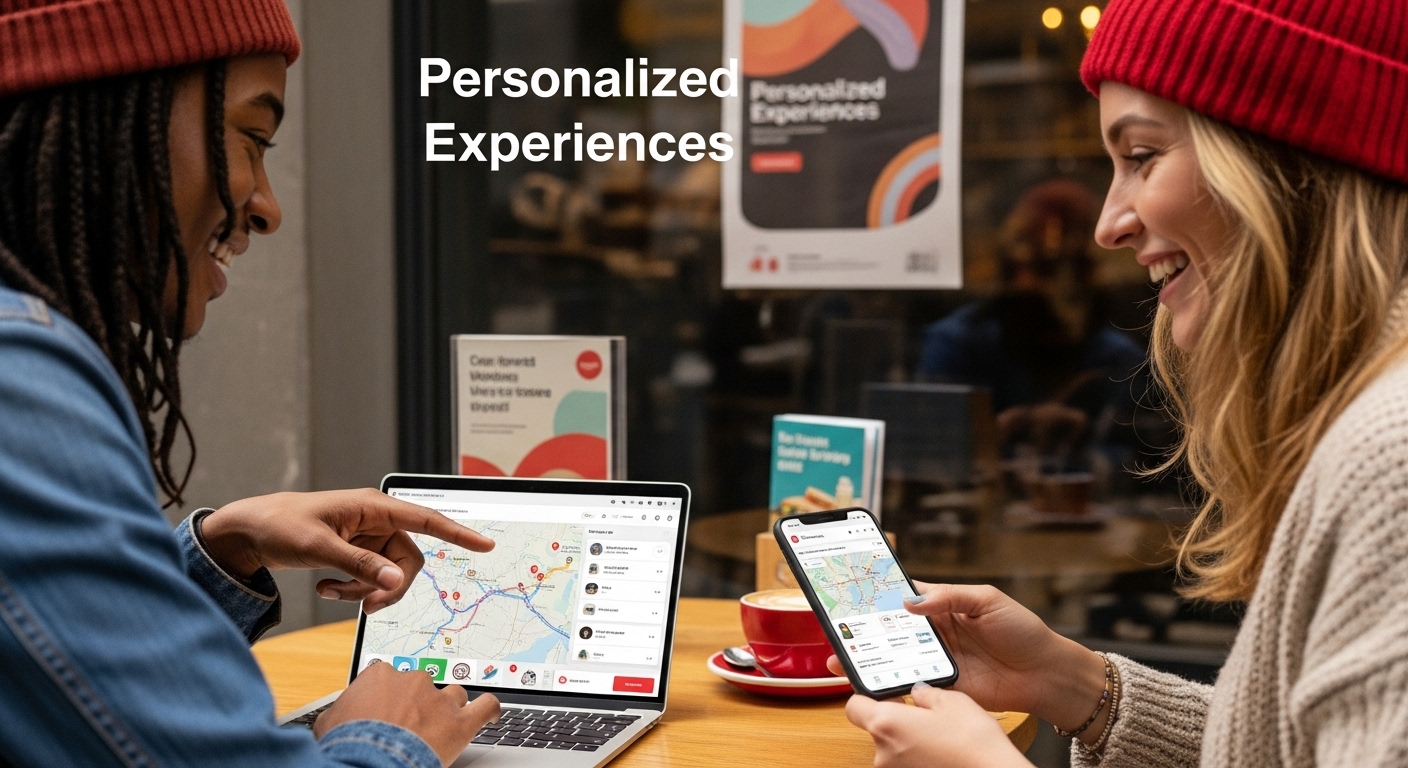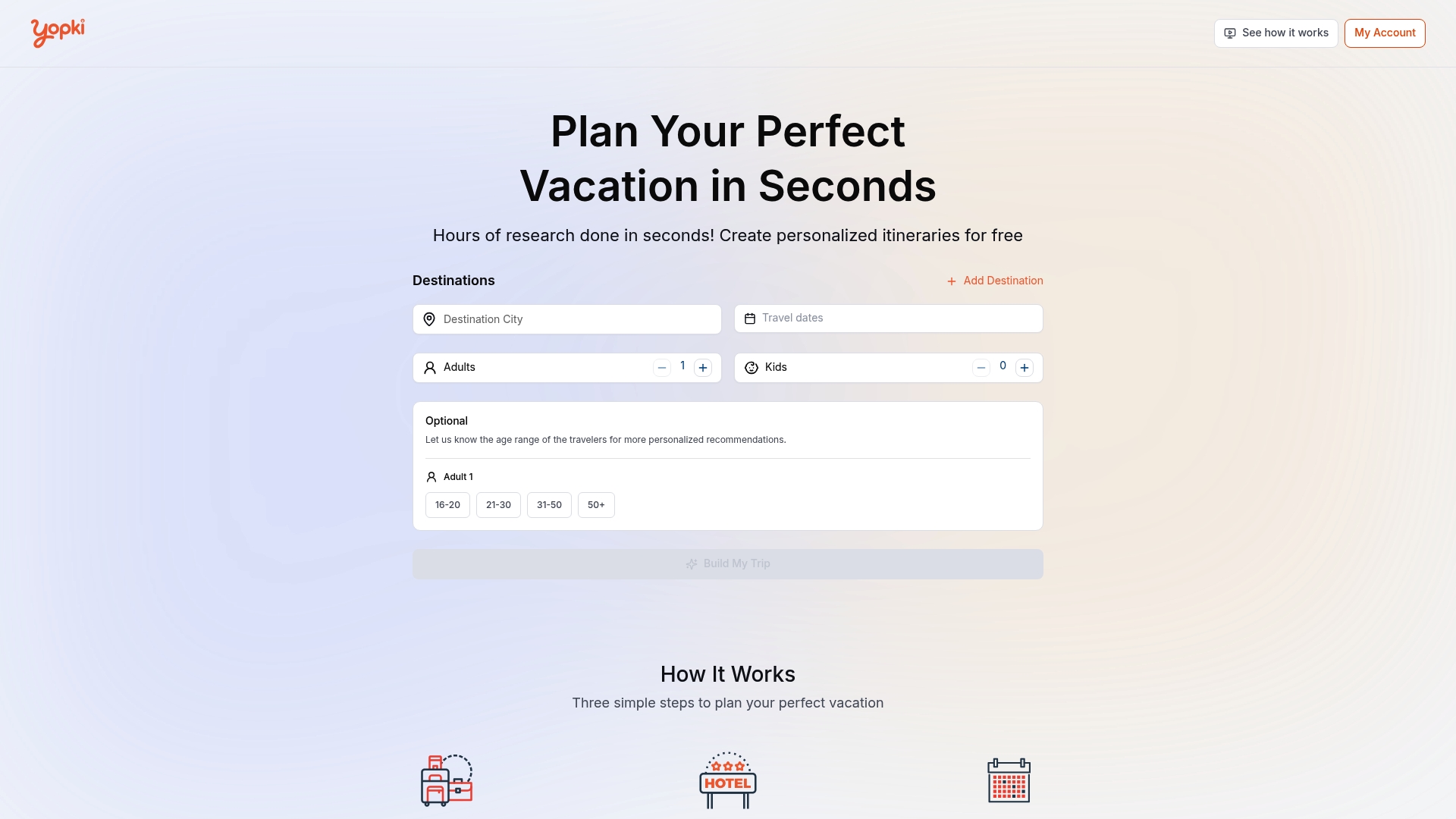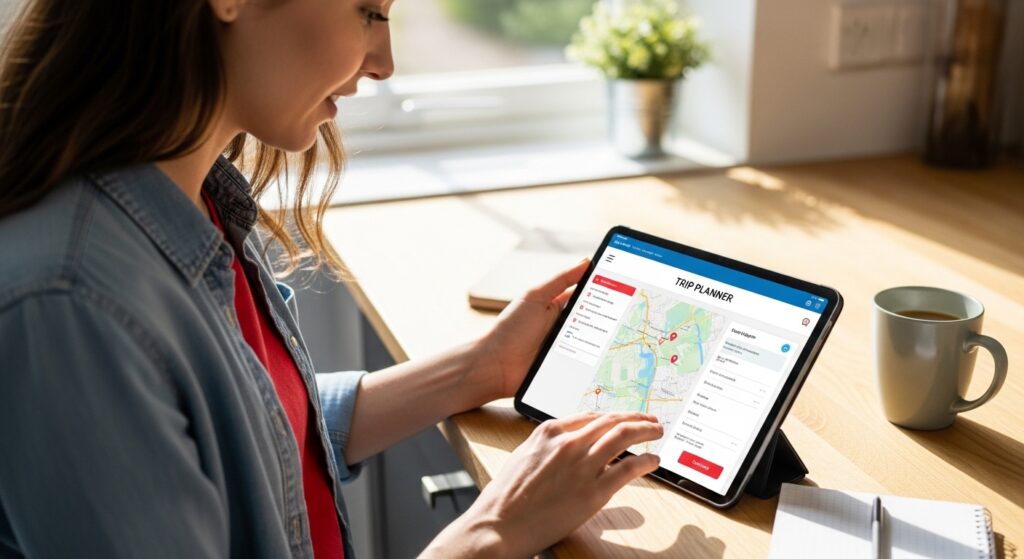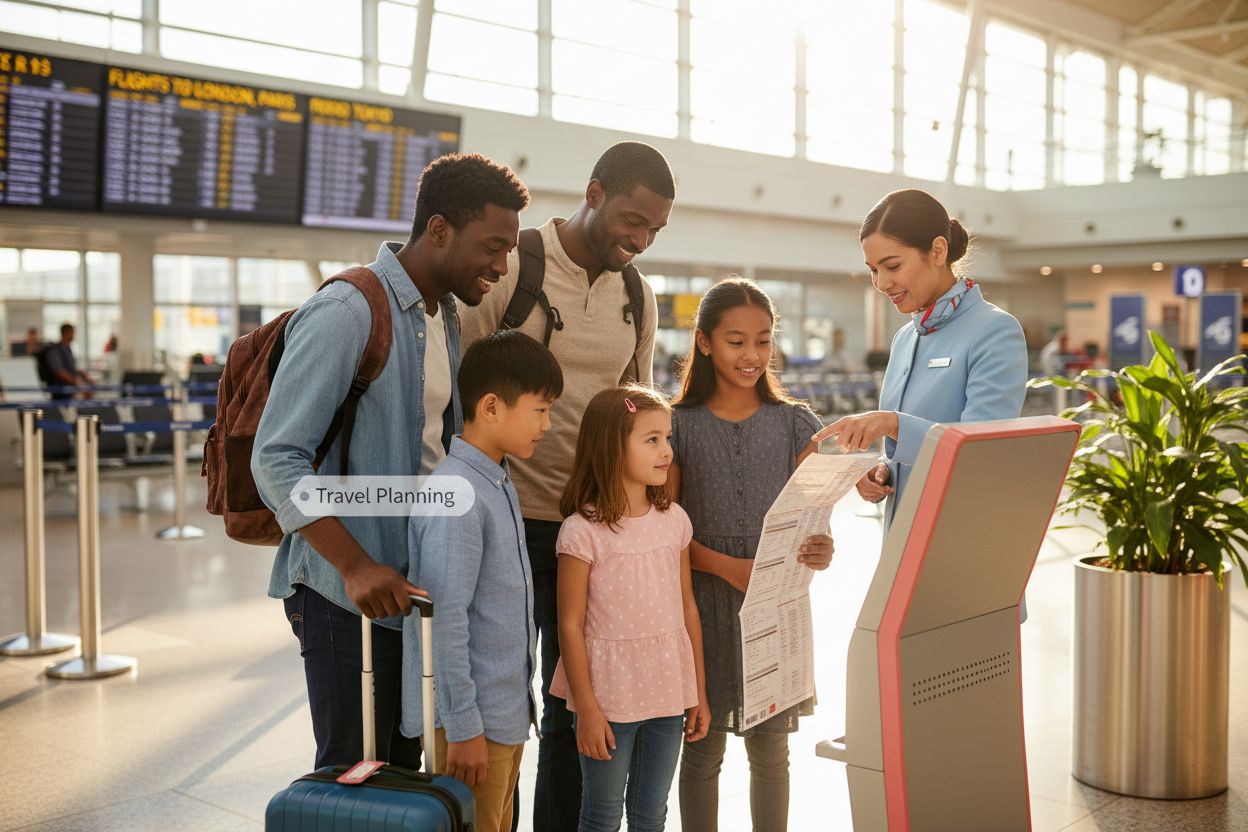Planning a perfect trip can feel overwhelming with endless options and shifting schedules. Travelers spend over 10 hours on average just researching and building their itineraries. And yet most people still end up missing out on hidden experiences or get tangled in last minute changes. But now, automated trip planners are rewriting the rules, using real time data and smart algorithms that deliver truly personal journeys almost instantly.
Table of Contents
- What Is An Automated Trip Planner And Why Use It?
- The Importance Of Automated Trip Planners In Travel
- How Automated Trip Planners Work: Key Features Explained
- Understanding The Technology Behind Trip Planning Automation
- Real-World Applications Of Automated Trip Planners
Quick Summary
| Takeaway | Explanation |
|---|---|
| Automated trip planners save time. | These tools streamline travel research, minimizing the effort needed to plan a trip efficiently. |
| They provide personalized itineraries. | Automated planners tailor travel experiences based on user preferences and real-time data integration. |
| Real-time data integration enhances planning. | These systems utilize current information including transport schedules and local events to optimize travel routes. |
| Simplifies complex travel logistics. | Automated planners eliminate extensive manual research, coordinating trips more effectively and reducing potential complications. |
| Recommended for all travelers. | Whether for business or leisure, automated planners offer significant benefits for anyone looking to enhance their travel experiences. |
What is an Automated Trip Planner and Why Use It?
An automated trip planner transforms how travelers design their journeys by leveraging advanced technology to generate personalized travel itineraries. Unlike traditional manual planning methods, these intelligent systems use sophisticated algorithms and user preferences to craft comprehensive travel experiences with remarkable precision.
The Core Functionality of Automated Trip Planners
Automated trip planners operate by collecting and synthesizing multiple data points to create seamless travel routes. According to research from Berkeley’s Information School, these systems integrate user inputs like destination, budget, interests, and travel dates with real-time data such as transportation schedules, weather conditions, and local events.
The key features typically include:
- Instant itinerary generation based on personal preferences
- Real-time route optimization
- Comprehensive travel detail consolidation
- Adaptive planning capabilities
Benefits of Using an Automated Trip Planner
Modern travelers gain significant advantages by utilizing automated trip planners. These digital tools eliminate the complex and time-consuming process of manual travel research. Learn more about how itinerary apps streamline travel planning by reducing stress and increasing trip efficiency.
The primary benefits include saving substantial time, accessing curated recommendations, minimizing travel risks, and creating personalized experiences tailored to individual preferences.
![]() Travelers can now transform what was once a stressful planning process into an enjoyable, straightforward journey preparation experience.
Travelers can now transform what was once a stressful planning process into an enjoyable, straightforward journey preparation experience.

The Importance of Automated Trip Planners in Travel
Automated trip planners have revolutionized the travel industry by addressing traditional challenges travelers face during trip preparation. These sophisticated digital tools offer comprehensive solutions that transform complex travel planning into streamlined, personalized experiences.
Below is a table summarizing major challenges of traditional travel planning and how automated trip planners address each one.
| Traditional Challenge | How Automated Trip Planners Solve It |
|---|---|
| Extensive manual research | Centralize and automate research using real-time data |
| Time-consuming trip coordination | Streamline coordination by generating instant, optimized itineraries |
| Difficulty accessing personalized options | Provide custom recommendations based on user preferences |
| Risk of missing hidden experiences | Surface curated and locally relevant activities or sights |
| Handling last minute changes | Adapt itineraries dynamically with updated data and suggestions |
| Complicated logistics management | Consolidate travel details, bookings, and routes in one place |
Solving Traditional Travel Planning Challenges
Traditionally, travelers invested significant time researching destinations, comparing transportation options, and constructing detailed itineraries. According to research from the National Center for Applied Transit Technology, digital trip planning tools now provide integrated solutions that simplify these intricate processes.
Key challenges automated trip planners effectively resolve include:
- Eliminating extensive manual research
- Reducing time spent on trip coordination
- Providing real-time, personalized recommendations
- Minimizing potential travel complications
Strategic Advantages for Modern Travelers
Modern travelers gain substantial strategic advantages through automated trip planners. Discover how trip organization can transform your travel experience by leveraging intelligent technology that adapts to individual preferences and constraints.
These digital platforms offer more than simple itinerary generation. They provide intelligent, context-aware recommendations that consider factors like personal interests, budget limitations, travel constraints, and real-time conditions. By integrating multiple data sources, automated trip planners create comprehensive travel experiences that are both efficient and deeply personalized.
How Automated Trip Planners Work: Key Features Explained
Automated trip planners operate as complex technological ecosystems that transform raw travel data into personalized, actionable itineraries.
These sophisticated systems combine multiple technologies and data sources to create seamless travel experiences for modern travelers.
Technological Architecture of Trip Planners
At their core, automated trip planners utilize advanced computational frameworks that integrate multiple technological components. According to research from the U.S. Department of Transportation, these systems leverage intricate algorithms that process user preferences, external data streams, and real-time information to generate intelligent travel recommendations.
Here is a table outlining core technological components that power automated trip planners and their primary functions.
| Technological Component | Primary Function |
|---|---|
| Machine learning models | Analyze user data and predict optimal travel recommendations |
| Open data integration | Aggregate information from multiple travel, weather, and transit APIs |
| Real-time API connections | Ensure live syncing of schedules, prices, and local events |
| Geospatial mapping | Map locations and optimize routes |
| User preference algorithms | Learn and adapt to individual traveler behaviors and needs |
The fundamental technological components include:
- Machine learning models for predictive analysis
- Open data integration platforms
- Real-time API connections
- Geospatial mapping technologies
- User preference learning algorithms
Data Processing and Personalization Mechanisms
The magic of automated trip planners lies in their ability to transform complex data into user friendly recommendations. Explore how AI is revolutionizing travel planning and understand the intricate processes behind these intelligent systems.
These platforms continuously analyze multiple data points including user history, current travel trends, local event information, weather conditions, and transportation availability. By synthesizing these diverse inputs, automated trip planners create dynamic, adaptive itineraries that adjust in real time to changing circumstances and individual traveler preferences.
Understanding the Technology Behind Trip Planning Automation
Trip planning automation represents a sophisticated convergence of advanced technologies that transform complex travel data into intelligent, personalized recommendations. These technological systems blend artificial intelligence, machine learning, and complex data processing to revolutionize how travelers plan their journeys.
Artificial Intelligence and Machine Learning Foundations
At the core of trip planning automation are advanced artificial intelligence architectures that enable dynamic, adaptive decision making. According to research from UC Berkeley’s Information School, these systems utilize multi agent AI frameworks that can specialize in specific travel planning tasks, improving overall system performance and reliability.
The critical technological components driving these systems include:
- Neural network algorithms for pattern recognition
- Natural language processing capabilities
- Predictive analytics engines
- Real time data integration mechanisms
- Contextual understanding protocols
Technological Integration and Data Processing
Discover how AI is transforming travel planning technologies and explore the intricate mechanisms that power modern automated trip planners.
These platforms seamlessly integrate diverse data sources like user preferences, geographic information, transportation schedules, weather forecasts, and local event databases. By applying sophisticated machine learning models, they can generate nuanced, context aware travel recommendations that adapt dynamically to changing traveler needs and external conditions.
Real-World Applications of Automated Trip Planners
Automated trip planners have transitioned from theoretical concepts to practical tools that transform travel experiences across various sectors. These sophisticated systems now serve diverse user groups, providing customized solutions that address complex travel planning challenges in real world scenarios.
Transportation and Urban Mobility Solutions
In urban environments, automated trip planners are revolutionizing how people navigate complex transportation networks. According to research from the U.S. Department of Transportation, these platforms play a critical role in Mobility as a Service (MaaS) strategies, enabling seamless multimodal transportation experiences.
Key practical applications include:
- Integrated public transit route optimization
- Accessibility planning for individuals with mobility challenges
- Real time transportation alternative recommendations
- Sustainable travel route suggestions
- Cost effective commuting strategies
Personalized Travel Experience Enhancement
Learn how advanced trip planning apps transform travel experiences and understand their practical implementations across different travel scenarios.
These intelligent systems go beyond basic route mapping by creating holistic travel experiences. They analyze individual preferences, budget constraints, time limitations, and personal interests to generate tailored recommendations. Whether planning a weekend getaway, a business trip, or a complex international journey, automated trip planners provide nuanced, context aware guidance that adapts to unique traveler requirements.
Ready for Effortless Trip Planning? Discover the Smart Way with Yopki
Are you tired of endless research and confusing spreadsheets when planning your next adventure? As this article shows, the complexity of building a personalized itinerary, managing bookings, and adapting to real-time changes can turn excitement into overwhelm. Traditional manual planning demands too much time and still leaves you worrying about missed details. Automated trip planners are changing the way we travel, but choosing the right solution matters for truly seamless experiences.

Stop letting stress and uncertainty steal the joy from your travels. Experience Yopki and see how our intuitive web app instantly generates a trip built around your interests with every detail neatly organized in one central hub. Let our AI-powered trip planner help you focus on memorable experiences instead of logistics. Visit Yopki’s website now and start crafting your personalized, hassle-free journey today.
Frequently Asked Questions
What is an automated trip planner?
An automated trip planner is a digital tool that uses advanced technology to create personalized travel itineraries by analyzing user preferences, real-time data, and various travel options.
How do automated trip planners work?
Automated trip planners collect data from multiple sources, including user inputs and real-time information, and apply algorithms and machine learning to generate optimized and customized travel itineraries.
What are the benefits of using an automated trip planner?
Using an automated trip planner can save time, provide personalized recommendations, reduce travel risks, and simplify the planning process, making it more efficient and enjoyable for modern travelers.
Can automated trip planners adapt to individual travel preferences?
Yes, automated trip planners can adapt to individual travel preferences by analyzing factors such as personal interests, budget, and real-time circumstances to generate dynamic, tailored itineraries.



